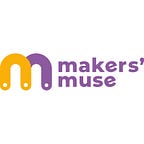Teaching digital literacy & STEM: preparing students for the future
As we navigate the complexities of the digital age, it is crucial for educators to equip our students with the skills necessary to thrive in an increasingly technology-driven world. The integration of digital literacy alongside STEM (Science, Technology, Engineering, and Mathematics) education offers a comprehensive approach that not only enhances learning but also prepares our students for future career opportunities.
Why Is Digital Literacy Essential?
In today’s fast-paced environment, digital literacy has evolved beyond basic computer skills. It now encompasses the ability to critically evaluate, utilize, and communicate information effectively in a digital context. For our students, mastering these skills is essential, especially as they prepare for a workforce that increasingly values both technological competence and STEM knowledge. Know more
How Does It Enhance STEM Learning?
The synergy between digital literacy and STEM education creates numerous advantages:
Enhances Critical Thinking: Digital literacy fosters critical thinking skills, enabling students to analyze and interpret data effectively, an essential skill in STEM fields.
Promotes Collaboration: Digital tools facilitate teamwork, allowing students to engage in collaborative projects that reflect real-world challenges and prepare them for future careers.
Prepares for Future Careers: The demand for professionals proficient in both digital literacy and STEM is growing. By combining these skills, we can more effectively equip our students for the changing job market.
Strategies for Integration
To effectively incorporate digital literacy into STEM education, consider the following strategies:
1. Use Real-World Problems
Engage students with real-world challenges that require both STEM knowledge and digital literacy skills. For instance, analyzing data from a local environmental issue can provide hands-on experience while teaching critical skills.
2. Teach Online Research Skills
Incorporate lessons on evaluating sources for credibility and reliability. By researching STEM topics, students can practice discerning valuable information from misinformation.
3. Integrate Technology into Projects
Encourage the use of digital tools in STEM projects, such as coding platforms like Scratch or Tynker. This hands-on approach reinforces both digital literacy and STEM concepts.
4. Foster Collaboration
Leverage collaboration platforms such as Google Workspace or Microsoft Teams for team projects. These platforms teach effective communication and collaboration skills, essential in today’s workforce.
5. Promote Digital Citizenship
Instruct students on responsible online conduct, covering privacy settings and ethical considerations related to technology. This knowledge is vital for effectively navigating the digital world.
Preparing for future careers
As educators, we play a pivotal role in preparing students for future challenges. By integrating digital literacy into STEM education, we equip our students with critical thinking skills, enhance collaboration, and provide them with a competitive edge in the job market.
Teaching digital literacy alongside STEM is not just a trend; it is a necessity for equipping our students for a rapidly changing world. By adopting these strategies, we can foster an environment that promotes critical thinking, collaboration, and preparedness for future careers.
Ready to enhance learning?
At Makers Muse, we are dedicated to empowering the next generation with the skills they need for success. Our engaging STEM courses emphasize digital literacy, critical thinking, and real-world problem-solving.
We invite to explore our innovative programs and discover how we can help your students thrive in a digital world!
